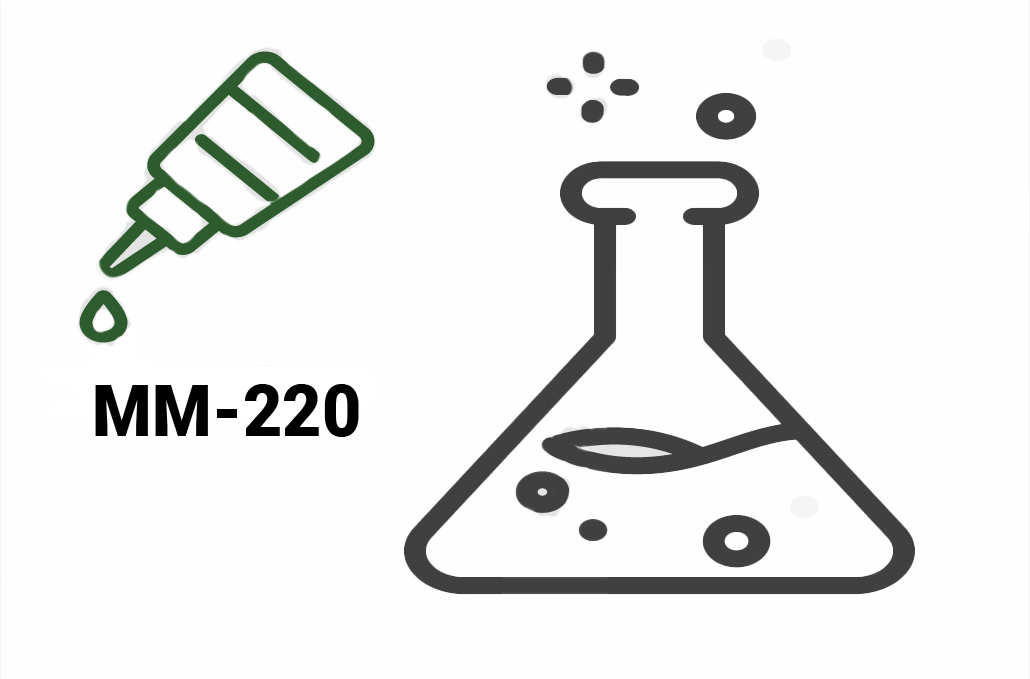MM220 | Mono-acrylate monomer
- Low Viscosity
- Low weight loss on cure
- Minimizes cure shrinkage
Product Description
MM-220 is a high-performance mono-functional acrylate monomer specifically engineered for advanced UV- and peroxide-cured resin systems. Featuring a unique polycyclic ring structure, MM-220 effectively minimizes volumetric shrinkage during polymerization, enhancing dimensional stability and mechanical integrity in cured systems.
MM-220 has low viscosity (<100 cP @ 25°C) ensuring excellent flow and compatibility in a wide range of formulations, making it an ideal reactive diluent for coatings, adhesives, inks, and composite resins. MM-220 also exhibits low weight loss at elevated temperatures (<5% @ 300°C) and a high decomposition threshold (>400°C), delivering outstanding thermal stability for high-performance applications.
Typical Applications:
- Reactive diluent for UV-curable coatings and inks
- Adhesives requiring high thermal resistance and low shrinkage
- Composite matrices in electronics and photonics
- Radiation-cured or thermally initiated systems (peroxide-cured resins)
Technical Specifications
| General Properties | |
| Appearance Appearance Appearance at room temperature. | Light yellow |
| Density (g) | 1.06 g/cm3 |
| Molecular weight | 220 g/mol |
| Physical Properties | |
| Viscosity Viscosity Viscosity is a measurement of a fluid’s resistance to flow. Viscosity is commonly measured in centiPoise (cP). One cP is defined as the viscosity of water and all other viscosities are derived from this base. MPa is another common unit with a 1:1 conversion to cP. A product like honey would have a much higher viscosity -around 10,000 cPs- compared to water. As a result, honey would flow much slower out of a tipped glass than water would. The viscosity of a material can be decreased with an increase in temperature in order to better suit an application | 100 mPa.s |



